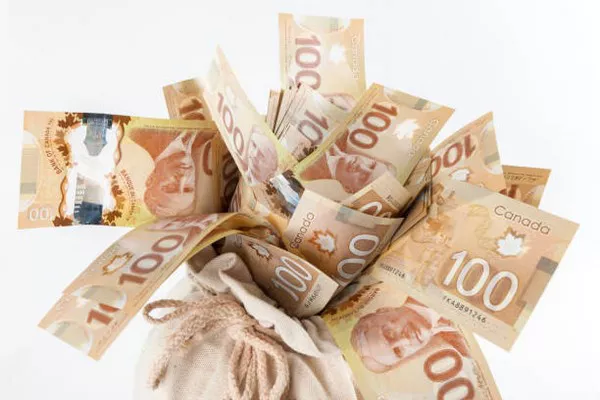Canada’s currency landscape is marked by a rich history of banknotes and coins, each with its own story and significance. Among these denominations, the $1,000 dollar bill stands out as a symbol of high value and prestige. However, questions often arise regarding the current status and usability of such high-denomination banknotes in Canada. In this article, we delve into the intricacies of using $1,000 dollar bills in Canada, exploring their legality, practicality, and historical context.
1. Introduction to $1,000 Dollar Bills
Historical Perspective
$1,000 dollar bills have been part of Canada’s currency system for decades, reflecting the country’s economic evolution and growth. These high-denomination banknotes were originally introduced to facilitate large transactions among businesses and financial institutions. However, their issuance and circulation have evolved over time, influenced by factors such as inflation, technological advancements, and changes in financial regulations.
Design and Features
The design of $1,000 dollar bills has varied throughout history, featuring prominent Canadians, iconic symbols, and intricate security features. From portraits of political figures to depictions of Canadian landscapes, each iteration of the $1,000 dollar bill tells a unique story about Canada’s heritage and identity. Advanced security elements, such as holographic strips and watermarking, have been incorporated to prevent counterfeiting and ensure the integrity of the currency.
2. Legal Status and Circulation
Discontinuation of High-Denomination Banknotes
In 2000, the Bank of Canada made the decision to discontinue the issuance of high-denomination banknotes, including the $1,000 dollar bill, as part of efforts to combat money laundering and illicit financial activities. While existing $1,000 dollar bills remain legal tender, their circulation has significantly declined over the years, with most transactions now conducted using lower-denomination banknotes and electronic payment methods.
Legality of Using $1,000 Dollar Bills
Despite their discontinuation, $1,000 dollar bills are still considered legal tender in Canada. This means that individuals and businesses can technically use them to settle debts and make purchases, provided that the recipient is willing to accept them. However, due to their rarity and potential security concerns, $1,000 dollar bills are rarely encountered in everyday transactions and may not be accepted by all merchants and financial institutions.
3. Practical Considerations
Accessibility and Acceptance
One of the primary challenges associated with using $1,000 dollar bills in Canada is their limited accessibility and acceptance. Due to their high value and rarity, $1,000 dollar bills are not readily available from banks or ATMs, making them impractical for most routine transactions. Additionally, many businesses and individuals may be hesitant to accept $1,000 dollar bills due to concerns about authenticity and security.
Alternative Payment Methods
Given the challenges of using $1,000 dollar bills, individuals and businesses often rely on alternative payment methods for large transactions. These may include electronic funds transfers, certified checks, or bank drafts, which offer greater convenience, security, and traceability compared to cash transactions involving high-denomination banknotes.
4. Historical and Collectible Value
Collectors’ Interest
Despite their limited circulation, $1,000 dollar bills hold significant value among collectors and numismatists. Due to their rarity and historical significance, well-preserved specimens of $1,000 dollar bills can command high prices at auctions and in the secondary market. Collectors are drawn to these banknotes not only for their monetary value but also for the stories they tell about Canada’s economic history and cultural heritage.
Preservation and Conservation
Preserving the integrity and condition of $1,000 dollar bills is essential for maintaining their collectible value over time. Proper storage in archival-quality holders, avoidance of direct sunlight and moisture, and careful handling are all crucial aspects of preserving high-denomination banknotes for future generations. By safeguarding these artifacts, collectors play a vital role in preserving Canada’s numismatic heritage.
Conclusion
In conclusion, while $1,000 dollar bills remain legal tender in Canada, their practical use in everyday transactions is limited due to factors such as rarity, accessibility, and security concerns. The discontinuation of high-denomination banknotes reflects broader efforts to modernize Canada’s currency system and combat financial crime. However, $1,000 dollar bills continue to hold historical, cultural, and collectible value, serving as tangible reminders of Canada’s economic evolution and heritage.
FAQs
Can I still use $1,000 dollar bills for transactions in Canada?
Yes, $1,000 dollar bills are still considered legal tender in Canada. However, their practical use in everyday transactions is limited due to factors such as rarity and acceptance by merchants.
Why were $1,000 dollar bills discontinued in Canada?
The discontinuation of $1,000 dollar bills in Canada was part of efforts to combat money laundering and illicit financial activities. The decision was made by the Bank of Canada in 2000.
Are $1,000 dollar bills valuable as collectibles?
Yes, $1,000 dollar bills hold significant value among collectors and numismatists due to their rarity and historical significance. Well-preserved specimens can command high prices in the secondary market.
Where can I obtain $1,000 dollar bills in Canada?
$1,000 dollar bills are not readily available from banks or ATMs due to their rarity. Collectors and individuals interested in acquiring them may need to seek out specialized dealers or auctions.
What should I consider when collecting $1,000 dollar bills?
When collecting $1,000 dollar bills, it’s essential to prioritize preservation and conservation to maintain their integrity and value over time. Proper storage and handling are crucial aspects of responsible numismatic collecting.


